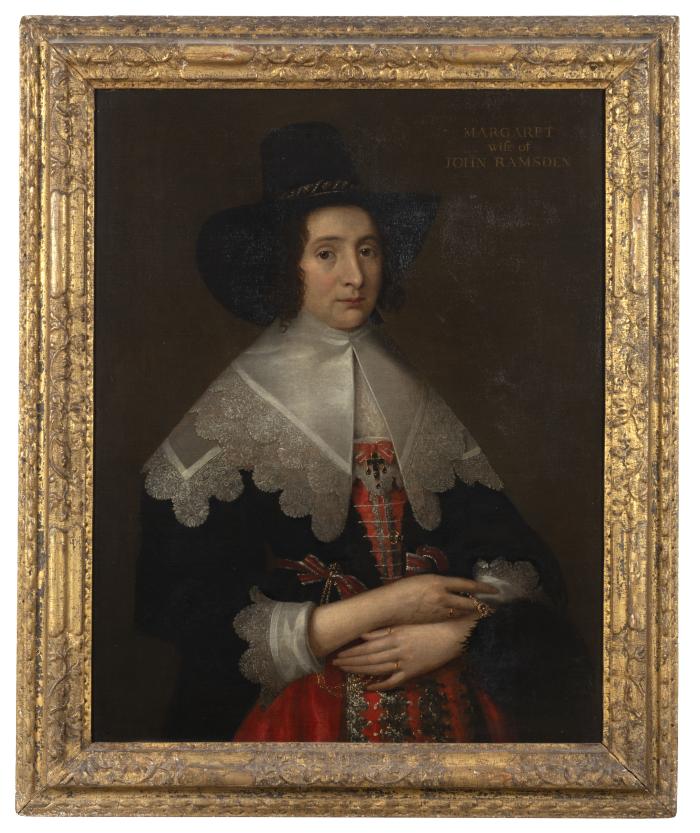Object Lessons
Selected Gifts from the Kamansky-Wheaton Collection, 2014–2024
June 4–August 3, 2024

Works of art are more than aesthetic objects meant to please the eye or inspire the mind and spirit. They are also historical documents that can reveal valuable information about a wide variety of topics, from political events, social structures, and cultural beliefs down to the nitty gritty details of how people lived, worked, traveled and otherwise engaged with the world around them. Works of art offer a tangible, material connection to people from other times and places. When we look at or touch a work of art or cultural object, we are sharing an experience with the people who originally made it or owned and used it over time. This shared experience encourages us to put ourselves in the shoes of those people and to imagine their lives, thoughts and feelings. Cultivating a sense of empathy in this way is a vital function of museums, especially teaching museums like the Kruizenga Art Museum, which exists to support the broader academic curriculum of Hope College and to help it provide an outstanding Christian liberal arts education that prepares students for lives of leadership and service in a global society.
The Kruizenga Art Museum fulfills its educational mission through its collection, which in turn exists through the generosity of its donors. Among the many donors who have supported the KAM collection, David Kamansky and Gerald Wheaton stand out for the volume and cultural breadth of their gifts, which have enriched every area of the museum’s collection. Since they began giving to Hope College in 2014, Kamansky and Wheaton have donated more than 2,000 Asian, European, American and African works of art, all of which have the potential to be used as resources for teaching and learning about a wide range of historical cultures and academic subjects.
This exhibition features a selection of the artworks that have been donated from the Kamansky-Wheaton collection over the past 10 years. The artworks were chosen by KAM curator Charles Mason to demonstrate the quality of the collection, and to illustrate the range of stories the objects can tell. The museum is immensely grateful to David Kamansky and Gerald Wheaton, not only for their generosity in gifts of art, but also for their estate bequest that will help support the Kruizenga Museum in perpetuity.
About the Donors
A native of California, David Kamansky is a former director and curator of Pacific Asia Museum in Pasadena, California. During his 32-year tenure at Pacific Asia Museum, Kamansky built a permanent collection there of more than 14,000 objects, while also organizing ground-breaking exhibitions on subjects ranging from Australian Aboriginal art and Hispano-Philippine ivory carving to contemporary Chinese painting and Tibetan furniture. Kamansky applied his broad interests and extensive knowledge as well to his personal collection, which ranges from Asian, European and American to Pre-Columbian, Oceanic and African art.
For many years, Kamansky’s private art collection was displayed in various homes owned by Kamansky and his husband Gerald Wheaton, who has worked in multiple jobs over the years as a commercial baker, salon owner and antique dealer. In 2013, Kamansky and Wheaton made the decision to downsize to a smaller residence. Having already donated hundreds of artworks to museums in California, Kamansky and Wheaton wanted to donate art from their collection to an institution where it would be used educationally and not duplicate existing collections. They knew about the Kruizenga Art Museum through their friendship with founding director and curator Charles Mason, who had served in Kamansky’s former position as director of Pacific Asia Museum from 2011 to 2013, and so began what has become a decade of gifts to Hope College.
The idea of giving to the KAM appealed to Kamansky and Wheaton because Gerald was born and raised in Michigan, so donating to Hope would create major art legacies in both of their home states. “Gerald and I like the idea of our art going to a part of Michigan where Asian art in particular is not well represented,” said Kamansky. The fact that the college was willing to accept a related library consisting of more than 7,000 art books, museum publications, and auction catalogs was also a major factor in their decision, as Kamansky noted in 2014: “The library was formed in conjunction with the art collection, and it is wonderful that students will be able to use the books and catalogs as they learn about the art.”
Image: Portrait of Margaret Ramsden, attributed to: Cornelius Johnson (English, 1593–1661), Circa 1625. Oil on canvas. Hope College Collection, gift of David Kamansky in honor of his husband Gerald Wheaton, 2023.29.3
View the Object Lessons exhibition and additional related artworks in the KAM collection database Download the Object Lessons exhibition catalog (PDF)
Kruizenga Art Museum271 Columbia AvenueHolland, MI 49423
workP. 616.395.6400
kruizengamuseum@hope.edu